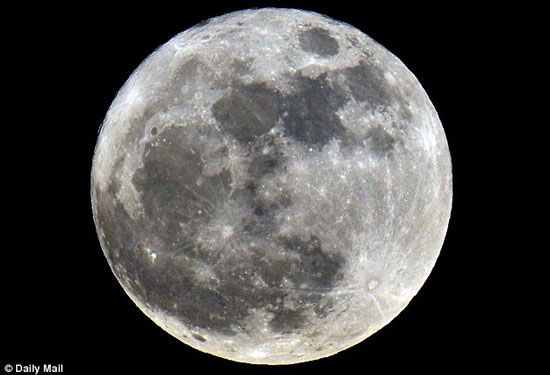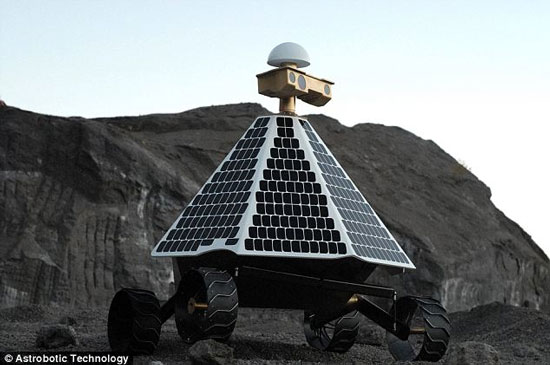Racing to the Moon
After information about rare treasures, the moon suddenly became a hotter destination than ever.
>>>Discovering 'titanium' treasure on the Moon
Science has found that the Moon contains a large amount of ice and methane, as well as extremely rare sources of helium3 for use in clean nuclear reactors. Most recently, it has been confirmed that Titanium reserves on the moon are 10 times higher than Earth. With extremely light weight but stronger and stronger than steel, Titanium is an extremely attractive economic value material.

Therefore, it is not difficult to understand that many businesses are 'lined up' to return to the Moon and exploit minerals.
Astrobotic Technology of America is one of them. Websit e of the company said it hopes to send probe robots to the moon in the near future. 'The thick ice on the Moon will be the foundation of the early moon economy,' Astrobotic Technology said.
The company is more interested in helium 3, the compound released by the solar wind to the Moon in very large quantities. Helium 3 can provide clean energy for nuclear and non-radioactive plants. Most importantly, it has a great effect: Just the amount of Helium 3 equal to a car fuel tank is enough to maintain nuclear power plants supplying the United States for a year.
Big prize

Astrobotic's exploration robots will have to compete with 26 other businesses.
'Cheap and clean, Helium 3 is the energy industry's future revolution , ' said David Gump, Astrobotic president.
However, Gump's company will have a lot of competitors. Up to 26 firms are racing to the moon, with the short-term goal of winning the $ 30 million 'Google Lunar X Prize' prize , farther away from exploiting nearly primitive resources on the Moon. .
The search giant Google decided to put up a $ 30 million prize for the organization 'to successfully get the robot to land on the Moon, travel 500 meters and send video back to Earth'.

Astrobotic ship landed, will deploy robots on the lunar surface to exploit minerals.
David Gump's goal is to launch the first robot in July 2014 or at least January 2015.
'We use robots that use solar energy, so we need to launch robots at the time of the sun's strong activity on the moon (usually the southernmost summer of the Moon and the winter of the north pole). ' Gump said
- Top of the best racing games on iOS
- Why must F1 riders lie while driving?
- How to speed up to win the final meters of the bike race
- Video: Development history of the racing helmet
- Does the Moon have its own moon? And you will be surprised with its name!
- Predict the horse race by mathematical model
- Hydrogen car racing with gasoline
- The fastest creature on the planet compared to racing formula cars
- Video: Impressive with the racing technology of the future
- Turn plastic waste into a racing car
- Try rocket motors for racing
- What is super moon? When will Vietnam receive Super Moon?
 Van Allen's belt and evidence that the Apollo 11 mission to the Moon was myth
Van Allen's belt and evidence that the Apollo 11 mission to the Moon was myth The levels of civilization in the universe (Kardashev scale)
The levels of civilization in the universe (Kardashev scale) Today Mars, the sun and the Earth are aligned
Today Mars, the sun and the Earth are aligned The Amazon owner announced a secret plan to build a space base for thousands of people
The Amazon owner announced a secret plan to build a space base for thousands of people